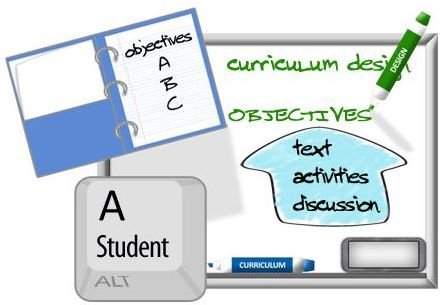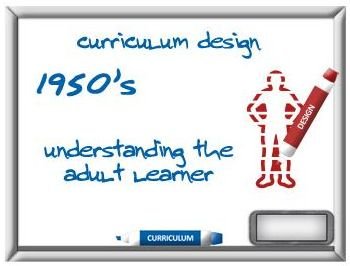Online Curriculum Course Design and Improving Instruction for Online Instructors or Professors
Curriculum Design Primer
Curriculum design is a process that has undergone a number of major refinements and advancements since the 1950s. The systems employed today have the advantage of decades of scientific research, a deep understanding of the learning process, and a well developed profile of the adult learner. Incorporating this understanding into the principles of curriculum design has made a significant improvement in the way courses are designed and delivered in the online environment. Instructors that understand the curriculum design process can use the information to more effectively plan and deliver materials that will have a greater impact on online students. This system learning approach is useful for instructors because it helps them leverage the curriculum design structure.
Objectives Based Design

Curriculum writers employ two primary concepts in building their materials – adult learning theory and instructional design theory. Adult learning theory defines the learner and presents specific characteristics that are important for a writer to consider. Instructional design theory makes use of research explaining how concepts are best presented to achieve understanding and retention.
Course curricula are built upon a foundation of objectives defined by experts. These objectives are the cornerstones for the text, activities and discussions that comprise the course. Instructional designers assemble the course materials to satisfy the needs of the objectives.
As instructors understand how the exercises support the objectives they can more fully capitalize on the work done by course designers. This is done by reviewing the specific objectives outlined for the course and drawing a clear connection to each of the activities used in class. This process functions as a validation of the course assignments and helps identify the need to create additional support materials to help students achieve the objectives.
Leveraging the Objectives
As a further educational strategy instructors can leverage objectives that are clearly and precisely defined. Instructors should evaluate the course goals to determine if they are clear, specific and achievable within the time frame during which the class is taught. Instructors can refine objectives that are vague such as “By the end of this course students will have an understanding of English composition.” That objective can be refined by writing “By the end of this course students will be able to write a properly formatted paper with APA documentation style.”
Once the objectives are defined the instructor should look carefully at the reading, assignments, evaluation tools and other materials used to teach and measure success. Sometimes the material may not adequately support the objective in which case the instructor will need to determine the proper course of action. Additional materials may need to be designed or the scope of the course may need to be modified. If new support materials are needed it is important not to get caught up in the need for computer based tutorials. The key is to provide high quality resources that are available for students quickly and easily.
Where possible instructors that teach classes directly related to the future profession of students such as accounting, finance, engineering, writing, etc. the activities should be based on real world scenarios. It is important to help students gain exposure to realistic scenarios in order to help them develop their skills. This may require that instructors make an effort to revise some of their existing material but the pay off is well worth the effort.
Putting the Pieces Together
Whether the course that an instructor teaches has been designed by a curriculum expert or has been assembled over the process of years it can always be improved. Understanding course development helps an instructor see the vertical development of objectives that support concepts which are combined to develop ability. When instructors use this knowledge to refine objectives into specific and measurable goals they provide themselves a clear blueprint by which they can build activities and papers that will help students reach those goals. As always the extra work required is limited in nature but can have a long lasting effect that can dramatically improve the quality of the course.
